
The Aga Khan Award for Architecture (AKAA) is an architectural prize established by Aga Khan IV in 1977. It aims to identify and reward architectural concepts that successfully address the needs and aspirations of Muslim societies in the fields of contemporary design, social housing, community development and improvement, restoration, reuse and area conservation, as well as landscape design and improvement of the environment.
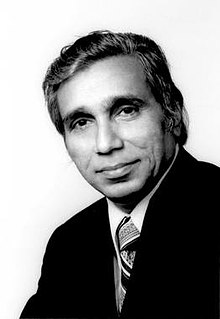
Fazlur Rahman Khan was a Bangladeshi-American structural engineer and architect, who initiated important structural systems for skyscrapers. Considered the "father of tubular designs" for high-rises, Khan was also a pioneer in computer-aided design (CAD). He was the structural engineer of the Sears Tower working with Architect Bruce Graham, since renamed Willis Tower, the tallest building in the world from 1973 until 1998, and the 100-story John Hancock Center.
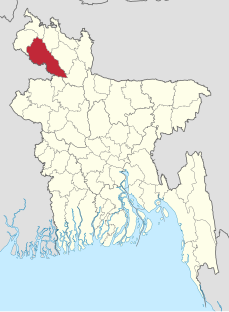
Dinajpur district is a district in the Rangpur Division of northern Bangladesh. Dinajpur is the largest district among all sixteen northern districts of Bangladesh.

The architecture of Bengal, which comprises the modern country of Bangladesh and the Indian states of West Bengal, Tripura, and Assam's Barak Valley, has a long and rich history, blending indigenous elements from the Indian subcontinent, with influences from different parts of the world. Bengali architecture includes ancient urban architecture, religious architecture, rural vernacular architecture, colonial townhouses and country houses, and modern urban styles. The bungalow style is a notable architectural export of Bengal. The corner towers of Bengali religious buildings were replicated in medieval Southeast Asia. Bengali curved roofs, suitable for the very heavy rains, were adopted into a distinct local style of Indo-Islamic architecture, and used decoratively elsewhere in north India in Mughal architecture.
The Aga Khan Academies is an initiative of the Aga Khan Development Network. When fully operational, the Aga Khan Academies network will consist of eighteen co-educational, K-12, non-denominational day and residential schools in fourteen countries in Africa, South and Central Asia, and the Middle East. The academic program is based on the internationally recognized International Baccalaureate curriculum.
Muzharul Islam was a Bangladeshi architect, urban planner, educator and activist. He is considered as the Grand Master of regional modernism in South Asia. Islam is the pioneer of modern architecture in Bangladesh and the father of Bengali modernism. Islam's style and influence dominated the architectural scene in the country during the 1960s and 70s, along with major US architects he brought to work in Dhaka.
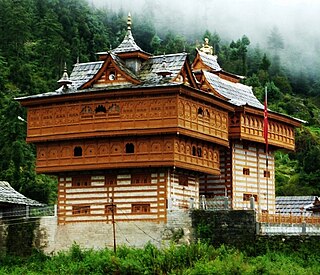
Indian vernacular architecture the informal, functional architecture of structures, often in rural areas of India, built of local materials and designed to meet the needs of the local people. The builders of these structures are unschooled in formal architectural design and their work reflects the rich diversity of India's climate, locally available building materials, and the intricate variations in local social customs and craftsmanship. It has been estimated that worldwide close to 90% of all building is vernacular, meaning that it is for daily use for ordinary, local people and built by local craftsmen.

Water transportation is an important means of communication in Bangladesh, a floodplain with more than 700 rivers and numerous oxbow lakes. Traditional country boats are still popular and they provide low cost convenient transport in this extensive inland waterways. Approximately 150 types of boats still populate the floodplain, and they vary in design, size and construction materials. They would be either of Bainkata type or of flat bottom type. A bainkata type boat would have a golui fore and a spoon shaped hull whereas a flat bottom type would have neither.

Architecture of Bangladesh is intertwined with the architecture of the Bengal region and the broader Indian subcontinent. The architecture of Bangladesh has a long history and is rooted in Bangladesh's culture, religion and history. It has evolved over centuries and assimilated influences from social, religious and exotic communities. The architecture of Bangladesh bears a remarkable impact on the lifestyle, tradition and cultural life of Bangladeshi people. Bangladesh has many architectural relics and monuments dating back thousands of years.

Diébédo Francis Kéré was born April 10, 1965 in Gando, Burkina Faso and studied at the Technical University of Berlin. Parallel to his studies, he established the Kéré Foundation e.V., and in 2005 he founded Kéré Architecture. His architectural practice has been recognized nationally and internationally with awards including the Aga Khan Award for Architecture (2004) for his first building, the Gando Primary School in Burkina Faso, and the Global Holcim Award 2012 Gold. Kéré has undertaken projects in varied countries including Burkina Faso, Mali, Germany, the United States, Kenya, and Uganda. In 2017 the Serpentine Galleries commissioned him to design the Serpentine Pavilion in London. He has held professorships at the Harvard Graduate School of Design and the Swiss Accademia di Architettura di Mendrisio. In 2017 he accepted the professorship for "Architectural Design and Participation" at TU München (Germany).

Friendship is a needs-driven non-governmental organisation that works in the Char islands and riverbanks of northern Bangladesh, the coastal belt in the south, and as of 2017, the Rohingya refugee camps in Ukhia, Cox's Bazar in the southeast. Established by Runa Khan in 2002, Friendship works to empower people through a sustainable, integrated development approach.

Anna Heringer is a German architect. A proponent of sustainable architecture, she has designed a number of notable buildings including the METI Handmade School in Rudrapur, Bangladesh.
Rudrapur is a village in northern Bangladesh. It is located in Biral Upazila in the Dinajpur District. About 370 km by road from Dhaka, it is close to the town of Dinajpur, not very far from the Indian border. The award-winning METI Handmade School is in Rudrapur.

Women in architecture have been documented for many centuries, as professional practitioners, educators and clients. Since architecture became organized as a profession in 1857, the number of women in architecture has been low. At the end of the 19th century, starting in Finland, certain schools of architecture in Europe began to admit women to their programmes of study. In 1980 M. Rosaria Piomelli, born in Italy, became the first woman to hold a deanship of any school of architecture in the United States, as Dean of the City College of New York School of Architecture. However, only in recent years have women begun to achieve wider recognition with several outstanding participants including two Pritzker prizewinners since the turn of the millennium.
Khondaker Hasibul Kabir is a Bangladeshi landscape architect and sustainability advocate who works with Bangladeshi development agencies such as BRAC and Grameen in rural and sustainable architecture. He first proposed "The Platform of Hope" in 2007 when he moved personally in with family in the slums and designed a community space. It was showcased in the Cooper–Hewitt, National Design Museum in New York City. He also worked with German Architect Anna Heringer on the METI Handmade School in Rudrapur, Bangladesh which received the Aga Khan Award for Architecture in 2007.

Green School (Bali) is a for profit, private and international pre-kindergarten to high school located along the Ayung River near Ubud, Bali, Indonesia.

Saif Ul Haque is an architect and educator based in Dhaka. He received Aga Khan Award for Architecture in 2017-2019 cycle.
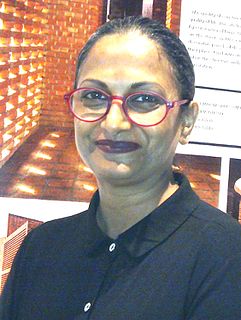
Marina Tabassum is a Bangladeshi architect. She is the principal architect of Marina Tabassum Architects. In 2016, she won the Aga Khan Award for Architecture for the design of Bait-ur-Rouf Mosque in Dhaka, Bangladesh.
The Arcadia Education Centre is located in South Kanarchor, Bangladesh on the bank of the Dhaleshwari River. The modular, amphibious structure adapts to seasonal flooding using an innovative design based on traditional building techniques and incorporating local materials. The facility contains a preschool, hostel, nursery, and vocational training centre.
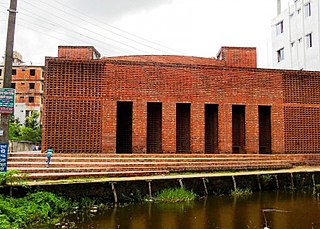
The Bait Ur Rouf Mosque is a distinctive urban mosque located in an economically-challenged area of Dhaka, Bangladesh. Designed by Bangladeshi architect Marina Tabassum and completed in 2012, it has been called a refuge of spirituality in urban Dhaka and received recognition for its beautiful use of natural light and for challenging the status quo of traditional mosque design. Instead of traditional symbolism such as domes and minarets, the mosque relies on open space and the rich interplay of light and shadow to create a prayer space that elevates the spirit.















